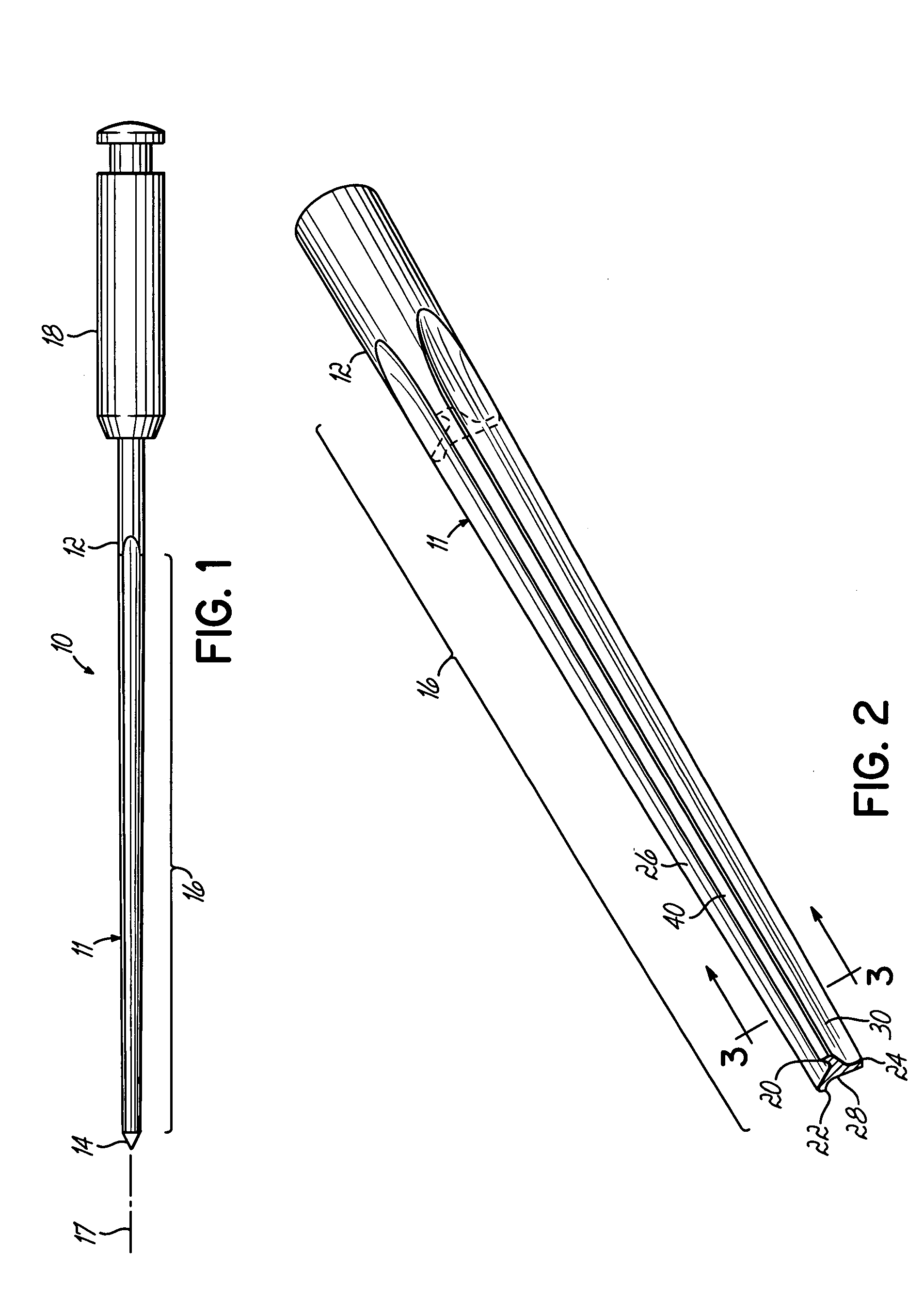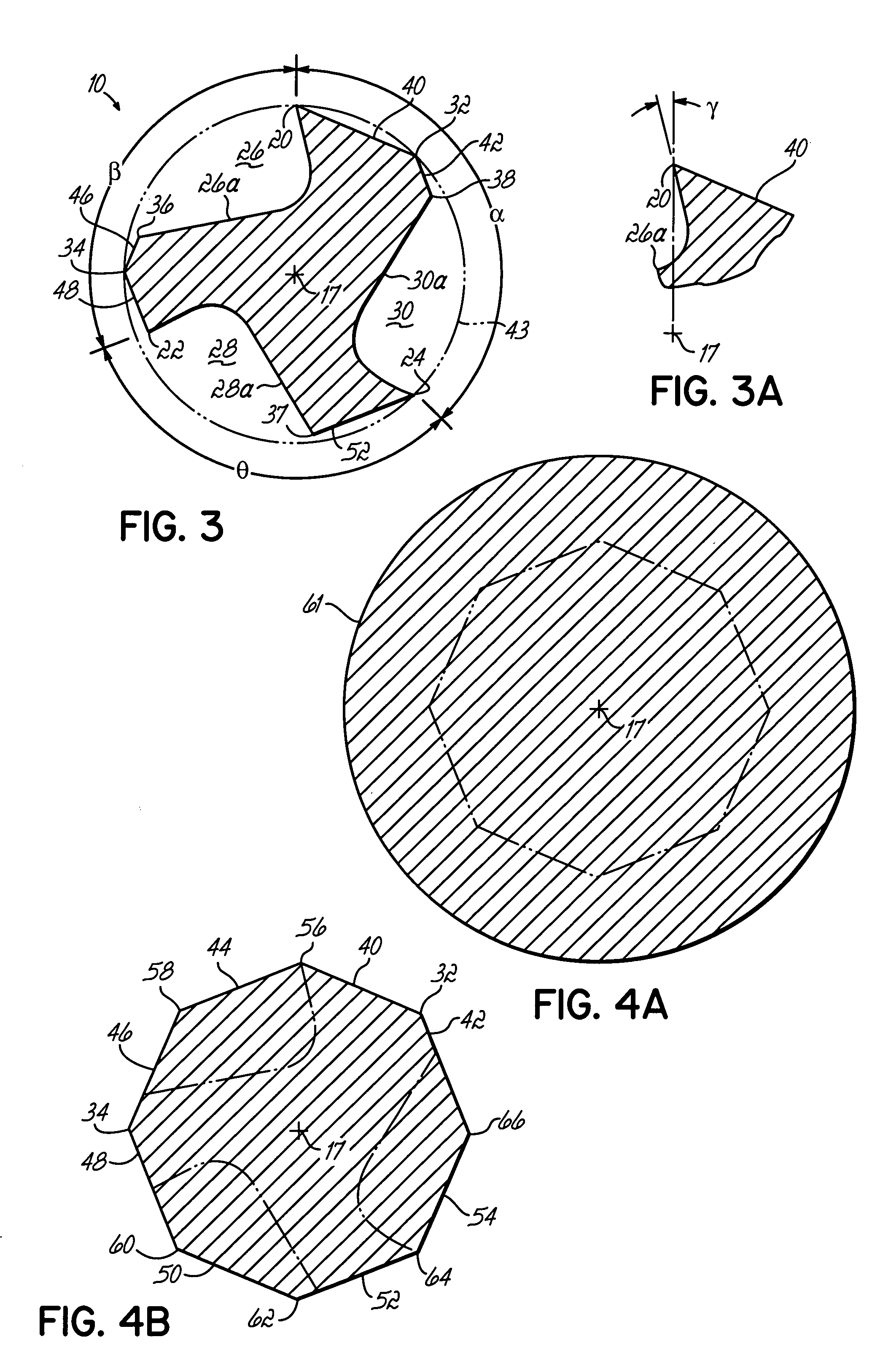Non-landed endodontic instrument and methods of making such endodontic instruments
a non-landed, endodontic technology, applied in the field of dental instruments, can solve the problems of increasing the incidence of instrument fracture and breakage, inconvenient manufacturing of landed endodontic files, and inefficiently pushing or scraping pulp tissue within the root canal wall of instruments,
- Summary
- Abstract
- Description
- Claims
- Application Information
AI Technical Summary
Benefits of technology
Problems solved by technology
Method used
Image
Examples
Embodiment Construction
[0026] The instruments of the invention may be used as reamers, files, or condensers. In all of the embodiments disclosed and described herein, the instruments are represented as reamers or files used for cleaning and shaping root canals or for creating a space for a post used to secure a crown or bridge. It will be appreciated by persons of ordinary skill in the art that the instruments described herein when provided with negative helix fluting may be used as condensers for pushing obturation materials, such as gutta percha, toward the canal apex for filling the root canal after it has been extirpated and shaped by reamers and files.
[0027] With reference to FIGS. 1 and 2, an endodontic instrument, generally indicated by reference numeral 10, includes a shaft 11 having a base or proximal end 12, a point or distal end 14, and an elongate working length 16 extending between ends 12 and 14 along a longitudinal shaft axis 17 generally aligned with the centerline of the shaft 11. A shan...
PUM
 Login to View More
Login to View More Abstract
Description
Claims
Application Information
 Login to View More
Login to View More - R&D
- Intellectual Property
- Life Sciences
- Materials
- Tech Scout
- Unparalleled Data Quality
- Higher Quality Content
- 60% Fewer Hallucinations
Browse by: Latest US Patents, China's latest patents, Technical Efficacy Thesaurus, Application Domain, Technology Topic, Popular Technical Reports.
© 2025 PatSnap. All rights reserved.Legal|Privacy policy|Modern Slavery Act Transparency Statement|Sitemap|About US| Contact US: help@patsnap.com



